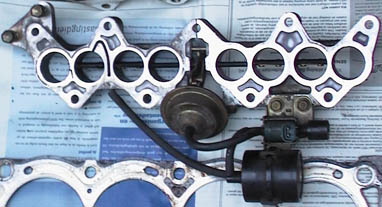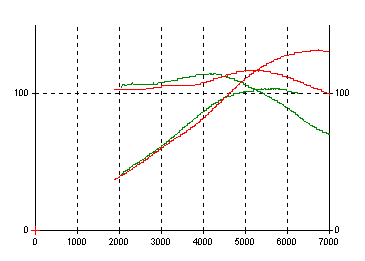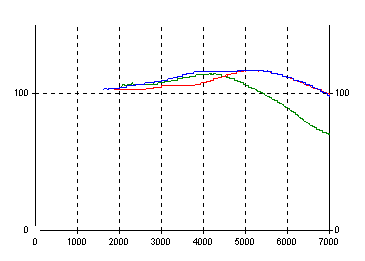About the 4A-GE
Now down to business. I'll be discussing TVIS on NA 4A-GE motors only. The general idea will be the same for other motors, but the numbers will differ. My test object is an '89 red top motor. If you are one of those people who think red tops don't have TVIS, you should read up on 4A-GE differences in any of the numerous websites on this topic. Just a short summary : somewhere in '87 Toyota built the 4A-GZE and at the same time, beefed up the 4A-GE's bottom end too, creating the red top motor. It wasn't until about 1990 that Toyota dropped TVIS and created the small port head which also has red cam cover letters.A good article about the 4A-GE and its version history can be found on Steve Neese's AW11 resource or on Phil Bradshaw's site. There's also a similar page in the tech section of Club4AG but I believe this was incorrectly copied from Phil Bradshaw's site. I have verified and reported the differences, but the Club4AG site owner chose not to correct or even reply.
What's TVIS?
TVIS is a variable intake system designed by Toyota to allow an intake manifold using large intake ports in the head to perform well over a very wide RPM range. Any TVIS manifold has TWO runners per cylinder, one of which is blocked off at low RPM by throttleplate-like butterflies. These butterflies are mounted in a sandwich plate between the manifold and head which is commonly called "the TVIS plate". Blocking off one runner increases velocity in the other runner, making it operate much more efficiently thru scavenging effects. (until it reaches its flow limit of course)
Here's a picture of the TVIS plate. Click on the pic to get
the fullsize version, with manifold. (378 KB!)

In case you're wondering : the two bolts on the upper left
"ear" are the EGR valve mounting bolts. The black can in
the bottom is the vacuum tank, the greenish thing (with
plug) above that is the VSV. The actuator is on the top
left of that. You can see the shaft run thru runners 2-7,
with butterflies in runners 2,3,6 and 7 (open now).
In Toyota-Mods, Club 4AG and similar forums, the question often pops up how to disconnect TVIS, so the TVIS butterflies stay open, killing a presumed intake restriction. Some even go as far as emptying the TVIS plate of its contents. Usually, someone then posts an explanation that TVIS actually HELPS low end power by keeping velocity in the runners up, but without proof, not everyone will believe him.
I have not seen information on how much difference it really makes, and on whether or not TVIS switchover point is at optimal rpm from the factory. I was curious about all this though, so I decided to look into this. First about how the system itself works.


